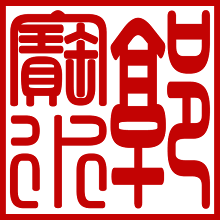Perubahan nada (modified tones) 变调【biàn
diào】1
The modified tone of the third tone. Happening if two syllable be
joined and if the first syllable is the third tone, this third tone will be
modified.
Perubahan dari nada tiga. Saat dua suku kata digabungkan dan kalau
suku kata pertama adalah nada tiga, maka nada tiga itu akan mengalami
perubahan.
上声的变调。两个音节相连,前一个音节是上声时,这个上声受到它后面的音节声调的影响而发生变调,解释如下:
1. nada 3 dan nada 3 (third
tones and third tones)
上声与上声【shàng
shēng yǔ shàng shēng】
双音节:上声+上声 >>
阳平+上声([2 1
4]+[2 1 4] >> [3 5]+[2 1 4])
Ex:手表【shǒu
biǎo >> shóu biǎo】、水果【shuǐ guǒ >> shuí guǒ】、可以【kě
yǐ >> ké yǐ】、理解【lǐ jiě >> lí jiě】。
